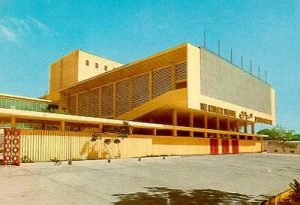
Somali has a distinctive,culturally rich heritage of poetry and music that dates back to the country’s earliest history. Somali poetry and music reflects different aspects of Somali lives and communities. It has been used to express the class, clan and cultural ways of Somalia’s diverse population. It has been used to praise and curse or seek revenge or push a political or social agenda forward.
Somali Music and Poetry
Somali poetry is metrical and alliterative, and poems and music generally fall under one of two broad categories: maanso or hees. Maanso are poems by named authors that deal with serious issues, often with arguments to advance—for example, the gabay (poetry). Lighter poems are called hees and are sung, often with musical accompaniment. They include work songs, dance songs, and the modern urban form, heello.
Some of the most powerful Somali musicians include Cabdi Bashiir Indhobuur, the greatest Somali Singer/Songwriter/poet/Wadani. He wrote a song called Arligeygow, translated to mean My Land. Others included M. Mooge, M. S. Tubeec, X. A. Samatar, Magool (early on in her career), Maandeeq and Saado.
Somali society is an oral society, thus poetry and music are vehicles for expressing personal or group feelings, communicating to audiences, sending messages and solving problems within societies. We see music used as a mechanism for conflict resolution, in mediation or peace reconciliation meetings, at schools, institutions and any other national gatherings.
We have seen this becoming increasingly important during the break in the civil war in 1991. The Somali community has now adapted new western music to traditional Somali music. The international community is currently using poetry and music processes to sponsor their peace mediation deals, which it is believed affects the emotions of conflicting parties during dialogue conferences, example in 2000 Arta conference.
In many social and political gathering, speakers will always use poetry, words of wisdom and proverbs to express their views, arguments and explain situations in relation to cultural ways of the older generation. Famous poets and musicians would also be called to speak, sing or recite one or two of their poems in front of the gatherings. This always gives people a positive attitude towards issues discussed and the outcome is always marvelous.
Whenever family disputes, community disputes and land disputes are resolved by elders,poetry and words of wisdom will always be used to reference the importance of the case and how well it can be resolved permanently.
Somali artist have always come forward to promote peace initiatives and unite Somali people to build the country once again. In the modern days artist have used radio, TV and live social gathering to preach the older ways of Somali living, the successes and struggles of the Somali community, promote the rights of marginalized groups, promote peaceful co-existence and development. Example in Somalia, most of the advertisements for hotels, products and companies mostly have music in the background to attract the attention of the audience. The advertisers believe their products will be viewed and known to consumers and also sell because of the music that people relate to as their culture heritage.
People who are in love, people who are getting married listen to the magic flows of feeling and ideas expressed by the artist, which sooths them psychologically. This boost their internal feeling towards life and their partners. In contemporary Somali societies poets and musicians continue to be highly important figures who can influence Somali people positively. Example in the second half of 2003, the Somali poet Maxamed Ibraahim Hadraawi, the most famous living Somali poet, who spent five years in prison and a decade in exile during the Barre regime, traveled the length of the country preaching peace and non-violence.
K‘naan is also another interesting Somali artist who found fame internationally. He promotes peace through his lyrics, especially in his song ,Nagala soo baxa(come out with it) which directly challenged the Somali warlords.
Conclusion
In Somali society speeches and verbal agreement carry a lot weight and respect especially from leaders, artists and elders more than written peace suggestions or agreements. Somali oral culture is a very powerful tool to promote peace and conflict resolution.
In the past,Somali music and poetry was played at social gatherings like the Somali national theater, but after the civil war music still plays from local radio stations, television, tea shops and at wedding ceremonies. Youth enjoy music privately in their houses despite the fact that the general perception towards music and musicians has changed and that their previous roles of influence in the society have been fading away.
Somali music and poetry is highly recognized and associated with Somali culture and is basically used in many social, political and economic setting which empowers, impact personalities and seeks to help solve problems of the Somali community.

